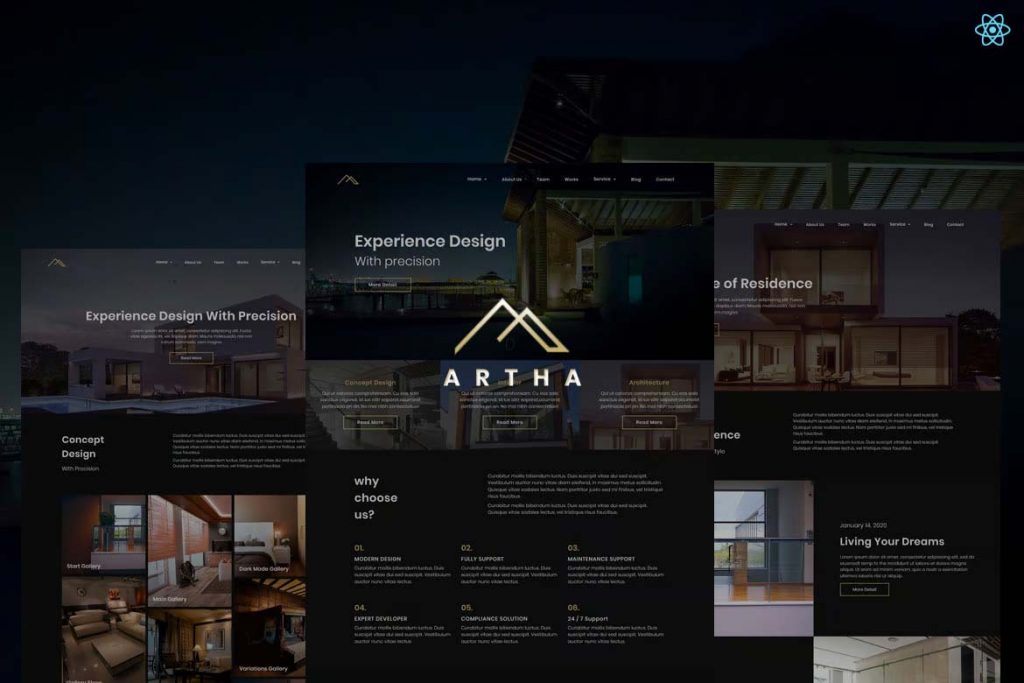When developing a modern web application, choosing the right React architecture template is crucial for scalability, maintainability, and performance. React, being one of the most popular front-end JavaScript libraries, provides immense flexibility. However, without a solid architecture, a React project can quickly become unmanageable. In this article, we explore the best React architecture templates, their components, and how they help you build efficient applications.
What is a React Architecture Template?
A React architecture template serves as a pre-defined structure for building React applications. It includes recommended project folder structures, component organization, and design principles to maintain code quality. These templates streamline the development process, especially for large and complex applications, by enforcing standard practices.
A solid architecture template ensures that your codebase is easy to navigate, test, and extend, saving time and effort in the long run.
Architecture & Interior React Template

Architect and Home Interior React Template

React Architecture & Interior Template

Free React Interior Landing Page

Architecture & Interior React Template

Modern Architecture React Template

Architecture and Interior React Template

React Interactive Interior Template

Why Use a React Architecture Template?
Here are some key benefits of using architecture templates for React applications:
- Scalability: Templates provide a foundation for growing your application as requirements increase.
- Maintainability: A structured codebase makes updates and fixes easier to manage.
- Consistency: Ensures that developers follow a uniform structure throughout the project.
- Code Reusability: Encourages reusable components and modules.
- Improved Collaboration: A clear architecture allows teams to work efficiently, minimizing confusion.
By using a well-defined architecture, developers can focus on building features instead of spending time organizing code.
Common React Architecture Patterns
To choose the right template, it is important to understand popular React architecture patterns:
1. Component-Based Architecture
React promotes a component-driven approach where the UI is broken into smaller, reusable components. This modular structure makes the codebase cleaner and more manageable.
- Example: Header, Sidebar, Footer, and Content as separate components.
2. Feature-Based Architecture
This architecture organizes code by feature rather than by type. It groups components, styles, and services related to a particular feature into one directory.
- Example:
/features /dashboard Dashboard.jsx Dashboard.css dashboardService.js
3. Atomic Design Architecture
Based on Brad Frost’s Atomic Design principles, this pattern divides components into five categories: atoms, molecules, organisms, templates, and pages.
- Atoms: Buttons, Input Fields
- Molecules: Forms, Navigation Bars
- Organisms: Complex UI components like product cards
4. MVC (Model-View-Controller) Pattern
While React focuses on the View layer, you can incorporate an MVC approach by using libraries like Redux or Context API for managing state and logic.
5. Clean Architecture
Inspired by Robert C. Martin’s Clean Architecture, this pattern separates concerns into layers:
- UI Layer: React components
- Business Logic Layer: Services and Use Cases
- Data Layer: APIs and State Management
Recommended React Architecture Templates
Here are some popular React architecture templates that can help you get started:
- React Boilerplate A highly optimized and robust template for building scalable React applications. It includes Redux for state management, React Router, and modern tooling.
- Create React App (CRA) CRA is a popular starting point that provides a clean folder structure. It is perfect for small to medium projects and can be extended with additional tools.
- Command:
npx create-react-app my-app
- Command:
- Next.js Template Next.js is a React framework for building server-side rendered (SSR) and static websites. Its out-of-the-box architecture includes routing, API handling, and performance optimization.
- Website: https://nextjs.org
- Atomic Design Template A template based on the Atomic Design principle for building highly modular and scalable UI components.
- Vite + React Template Vite, a modern build tool, offers faster development and optimized builds for React projects.
- Command:
npm create vite@latest my-app --template react
- Command:
Best Practices for React Architecture
To make the most out of React architecture templates, follow these best practices:
- Follow Component-Driven Development: Build reusable components and maintain clear boundaries.
- Implement State Management: Use tools like Redux, Context API, or Zustand for managing global state.
- Modularize Code: Keep code organized by features or layers.
- Follow a Consistent Naming Convention: Use standard file naming (e.g., PascalCase for components).
- Optimize Performance: Use tools like React.memo and lazy loading for better performance.
- Write Unit Tests: Test components using libraries like Jest and React Testing Library.
Choosing the right React architecture template is key to building scalable, maintainable, and efficient applications. Whether you prefer feature-based structures, Atomic Design, or tools like Next.js and React Boilerplate, the right template will significantly enhance your development process.
By combining good architecture patterns with best practices, you can create React applications that are not only robust but also future-proof. Start exploring the recommended templates and take your React development to the next level!